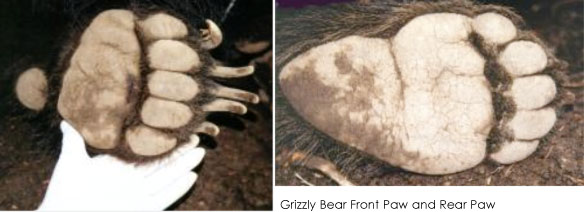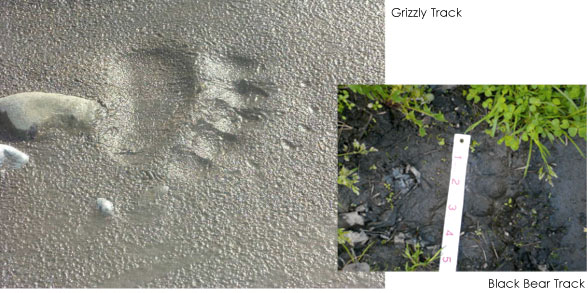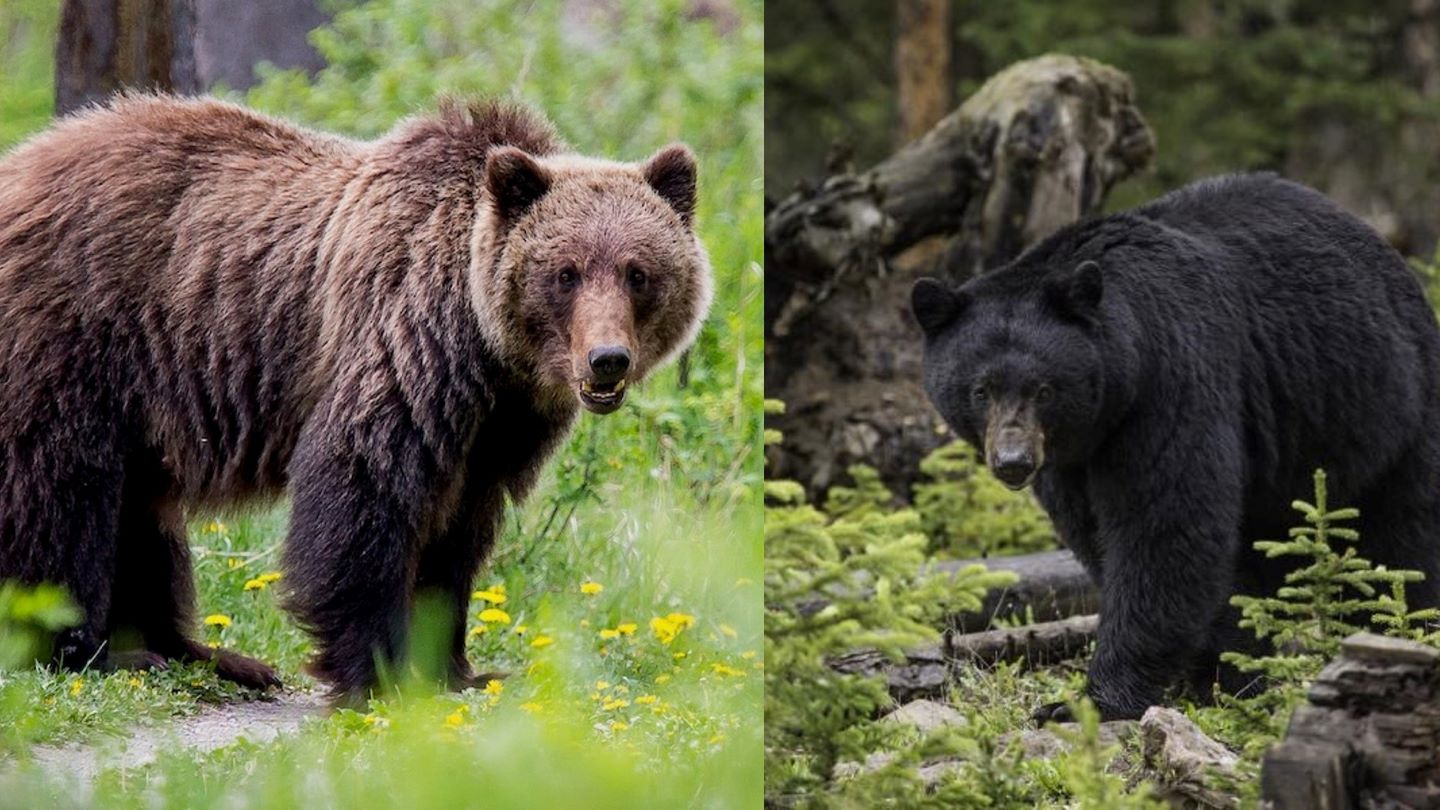
Know Your Bears
Bear Identification: Grizzly vs Black Bears

There are two bear species in the contiguous United States: black bears and grizzly bears. There are about 375,000 black bears and approximately 1,700 grizzly bears in the Lower 48 States. It is important to be able to distinguish between grizzly and black bears.
Image: Center for Wildlife Information
Color and Size
Color and size can be misleading and should not be used as identifying features.
Black Bear
- Color varies from blond to black.
- No distinctive shoulder hump.
- Rump is higher than front shoulders.
- Face profile is straight.
- Ears are taller and less rounded than grizzly ears.
- Front claws are 1-2 inches long and curved to facilitate climbing.
Grizzly Bear
- Color varies from blond to black.
- Distinctive shoulder hump.
- Rump is lower than shoulder hump.
- Face profile appears dished in.
- Ears are short and rounded.
- Front claws are 2-4 inches long, depending on the amount of digging the bear does, and are slightly curved. Claw marks are usually visible in tracks.
Black bear or grizzly bear tracks?
The difference between grizzly bear and black bear tracks can be very subtle. However, the Palmisciano Line Method can help you to identify a grizzly bear track correctly.
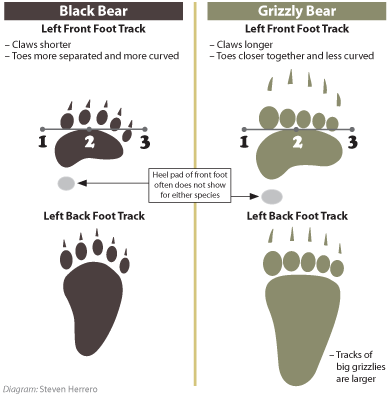
Follow these 3 Steps to Identify
- Find the lowest point of outside (largest) toe
- Find the highest point on front edge of palm pad
- Connect points 1 and 2; Extend this line to the inside of the track
– If more than 50% of the inside (smallest) toe is above the line, the track is from a grizzly bear
– – If more than 50% of the inside (smallest) toe is below the line, the track is from a black bear
If the line bisects the inside toe, claw marks, shape of the palm pad, spacing between toes, other signs must be used in species identification.
Black Bear Physical Appearance
Black bears are not always black. They can be brown, cinnamon, blond, white (e.g. the Kermode or Spirit bear) and even a bluish-gray (e.g. the Glacier bear). The latter two colors are rare: spirit bears are found on the central coast of British Columbia, and the Glacier bear is only found in Alaska’s Yakutat Bay region.
Approximately 97 percent of black bears in the north east are actually black. The central states also have predominately black, black bears. The western states have the most variety of color phases, with half being brown (remember this when you see a brown-colored bear – it may not be a brown (grizzly) bear!).
Adult male black bears weigh approximately 250 pounds while adult females weigh an average of 140 pounds. Yearlings are 60-75 pounds. Adults range from 5 to 6 feet long and are 2 to 3 feet tall at the shoulder.

White black bear with black cub. Black bears come in a wide variety of colors, from black to creamy white.
Grizzly Bear Physical Appearance
Grizzly bears are the second largest bear in North America after the polar bear. In the lower 48 States the average weight of a grizzly bear is generally 400 to 600 pounds for males and 250 to 350 pounds for females.
The name “grizzly” is derived from the bear’s pale-color tipped guard hairs. This long, course outer hair forms a protective layer over the soft underfur. The overall coloration of grizzly bear fur varies from light brown to nearly black, and is influenced by nutrition, coat condition, spring shedding and new growth.
Grizzly bears have long claws, which they use mainly for digging roots. Grizzly bears can be distinguished from black bears by their concave face, distinct shoulder hump, short rounded ears and longer, curved claws.
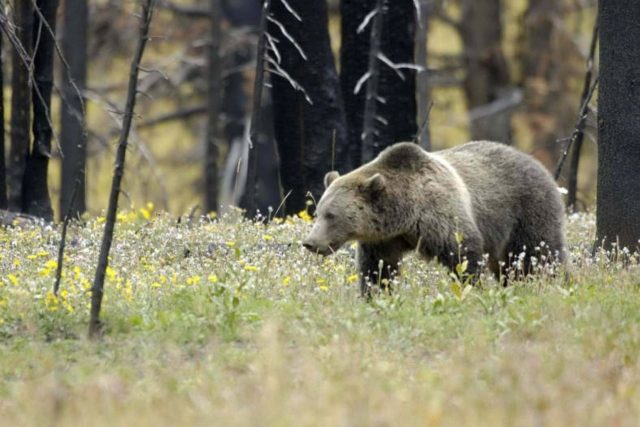
The grizzly’s thick fur varies from light brown to nearly black and is sometimes “frosty” looking, hence the names “grizzly” or “silvertip.”

